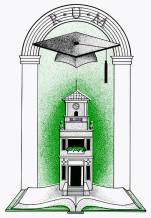
|
|
Situational Leadership |
FACILITATOR:
Davis L.
Holloway, Master Instructor
Center for Leadership Studies
DATE:
PLACE:
Mayaguez Resort & Casino Hotel
OVERVIEW:
This is the foundational
program. You’ll learn the essential skill of diagnosing the performance
needs of individuals and teams and the “how to” of working with
and through them to get the job done -- while maintaining a positive
work environment. Once you’ve mastered the basics of the “model”
we’ll work on how it can be applied to help you to develop others and to
reverse “slipping performance. We’ll spend time analyzing and
interpreting the results of your LEAD Self-assessment and
end the day with an energetic session with the Situational Simulator.
Throughout, you’ll be considering how the Situational Leadership® model can best be leveraged to meet your
leadership challenges both personally and organizationally.
This course will enable the participant to:
¨
Provide
learners the leadership “how to”;
¨
Enrich and
augment existing “human skills”;
¨
Maximize the probability of
successful and effective leadership;
¨
Support and sustain the process of
organizational change;
¨
Provide learner the means to align
and integrate their leadership intentions and behavior –
their walk and talk;
¨
Learn to apply the model in a
variety of settings;
¨ Increase
leadership effectiveness while bolstering the bottom-line.
|
|
Registration & Wake-up coffee |
|
|
Morning Session (1/4) |
|
|
Break |
|
|
Morning Session (2/2) |
|
|
Lunch |
|
|
Afternoon Session (1/2) |
|
|
Break |
|
|
Afternoon Session (2/2) |
|
|
Closure |
CONTACTS:
|
Dr. Manuel Toledo* |
Dr. Manuel Jimenez |
Dr. Rogelio Palomera |
* Reservations
REMARKS:
- The workshop will count for CEP credit (8 hours)
- Reservations required due to limited number of seats
- Refreshments and lunch will be served
WORKSHOP AGENDA:
¨
Introduction
·
Workshop Organization
·
What is Leadership?
·
Self-Assessment (LEAD
Self instrument – may be done in advance)
¨
Influencing the Performance of
Others - Module 1
·
The Process of Influence
§
Leadership Culture – who are
we?
§
Define management and leadership
and discuss the differences
§
Explore the concept of leadership
and its importance to successful and effective management
§
Collect data to determine your
perception of your leadership style
·
Surfacing the Real Task
§
Understand the distinction of job,
task and activity
§
Getting on
the same page – a common language for performance
¨
Assessing Criteria for
Performance - Module 2
·
Readiness
§
Identify and understand indicators
of ability
§
Identify and understand the
indicators of willingness
§
Understand the interplay of
ability and willingness
§
The dynamic quality of readiness
·
Readiness Levels
§
Determine the indicators of
readiness levels
§
Identify and understand the logic
of readiness
§
Use of readiness as a diagnostic
tool
¨
Leader Behavior - Module 3
·
Leadership Styles
§
Explain the terms “task
behavior “ and “relationship
behavior” and describe them by behavioral indicators
§
Give examples of high/low task and
high/low relationship behavior
§
Benchmarking: classify examples of
leader behavior
·
The Model
§
Discuss and work with the Situational
Leadershipâ Model
§
Know which styles have the highest
probability of success in various situations
§
Know the high-probability
leadership styles of various situations
§
Understand short and long-term
consequences of style/readiness mismatches
·
Feedback – comfort, culture
and communication
§
Understand the significance of
your primary leadership style
§
Determine the supporting style(s)
which completes your style profile
§
Identify areas for growth and
development – the perceptions of others
§
LEAD 360 Feedback Profile – Analysis and Interpretation (Optional)
·
Situational Simulation –
Skill Practice
§
Back on the job…
·
Program Close
SPONSORS:
|
|
|
|
Web design: mjimenez


